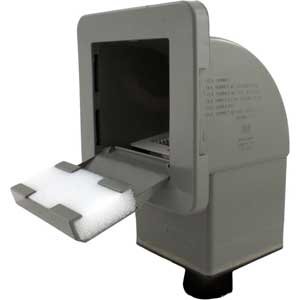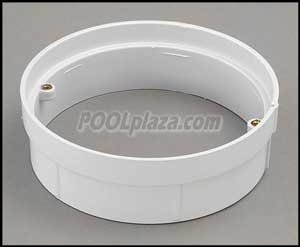The Stabilizer Debate
How Much Is Too Much???
Chlorine stabilizer is added to the pool to keep the chlorine from being quickly dissipated by sunlight. That is a good thing.
Unfortunately, as the stabilizer level builds up, it can quickly exceed 100 ppm and at that point it is really higher than it ought to be.

How does stabilizer level get that high?
The chlorine tablets most often purchased by homeowners contain about 50% stabilizer by weight. In other words for every pound of
chlorine tablets that your pool consumes, you are adding one half of a pound of stabilizer. Check out the label on your chlorine tablets and it says something like
“trichloroisocyanuric acid”.
In other words, if you are using stabilized chlorine tablets (as most pools do) then you are adding stabilizer to the water every day,
whether you intend to or not.
If you have a 25,000 gallon pool that uses 10 lbs. of chlorine tablets per month, you are adding 5 lbs of stabilizer to the pool each
month, which is enough to raise your stabilizer level by 25 ppm per month. This means that inside of six months, your stabilizer level could exceed 100 ppm.
Even if you are very conservative with your chlorine tablet usage, you will easily exceed the 100 ppm stabilizer level within a year.
What is the problem with a high stabilizer level?
The first problem with a high stabilizer level is that many municipalities consider anything above 100 ppm to be the maximum safe level,
due to concerns about it being a potential carcinogen. The hazard is not universally accepted since stabilizer has not been classified as a carcinogen by any of of
the big players (OSHA, etc).
The second (and more significant problem) with a high stabilizer level is that it greatly reduces the effectiveness of the chlorine in the
pool. Remember that stabilizer works by slowing down the reaction of the chlorine in the pool. At higher concentrations, it slows down the reaction so greatly
that it significantly reduces its effectiveness. This is seen in the fact that yellow algae becomes a lot more difficult to control and the water can become dull.
The unseen hazard is that it is also less effective against bacteria, etc, leading to concerns about how sanitized the water may be at any particular moment. The
kill time of chlorine is normally measured in milliseconds, but at high stabilizer levels, the kill time becomes seconds and minutes, and time is critical in water
sanitization.
Does everybody agree on this?
Unfortunately, some chlorine manufacturers will argue that there is no problem with overstabilization, although the larger
producers are now alluding to the problem, whereas they all denied it for years. The following is a sample quote from the PPG web site:
High stabilizer levels can reduce chlorine’s ability to kill bacteria and control algae leading to bather complaints such
as rashes, infections, and possible algae problems.
How do we know that this is truly a problem?
First, since we care for about 1000 pools and have 20 years experience in the industry, our experience has shown an
unmistakable correlation between high stabilizer levels and reduced chlorine effectiveness. When we see a yellow algae problem that refuses to respond to high
levels of chlorine, we almost always find a high stabilizer level that is contributing to the problem.
Second, we have used ORP technology to prove this point. Chlorine is an oxidizer. It works by oxidizing materials
in the water. An ORP meter can be used to measure the actual level of oxidation taking place in the water. In other words, it can show us how effective the
chlorine actually is.
At moderate levels of stabilizer with 2 ppm chlorine you will achieve an oxidation level of approximately 725 mV which is
enough to achieve a kill time in the milliseconds range. With a high stabilizer level at the same or higher chlorine level, you will have a hard time achieving even
a 600 mV reading which will extend your kill time to seconds and even minutes.
One source that downplayed the problem had the following to say:
‘Chlorine Lock,’ a term given to a condition once thought to be produced from high cyanuric-acid levels tying up free
available chlorine, has been proven false by the industry. Generally, high cyanuric-acid levels of 400 ppm or higher are associated with excessive Total Dissolve Solids
(TDS) or combined chlorine or cbloramines and not “Chlorine Lock.’
The amusing thing is that while they denied the existence of problems related to high stabilizer, they said:
High levels of cyanuric acid will cause a reduced ORP reading. Manufacturers of ORP equipment recommend that a higher FAC
be maintained to reach the desired 650 mV minimum.
In other words, what they are admitting that high stabilizer level will reduce the oxidation reading and that a higher level
of chlorine will be needed to achieve the same results. Hmmm . . . sounds like they are admitting the problem. The only problem is that once your stabilizer
level gets really high (150 ppm plus), you can have 20 ppm chlorine in the pool and still not have proper sanitization. At that point you will probably have
swimmers complaining about the quality of the water.

|
































